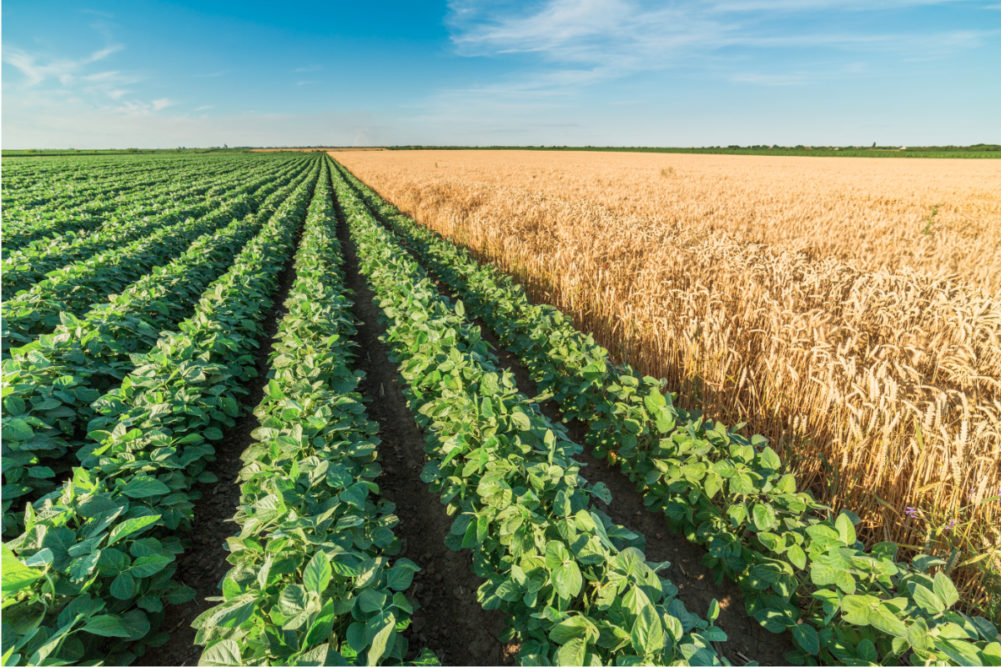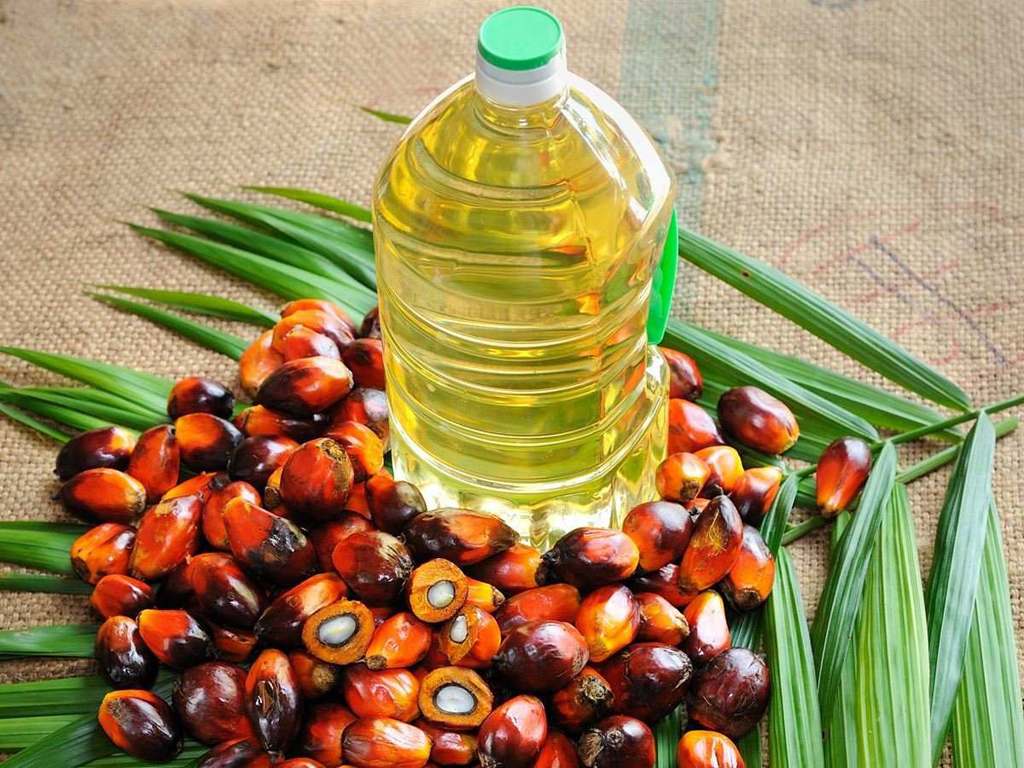Soybean Insights: Market Trends and Projections
US soybean market trading, May delivery have surges by 5.00¢, reaching $11.84¼ per bushel. Concurrently, soymeal experienced a dip of $0.4 to $332.80 per short ton, while soy oil displayed resilience, surges 0.74¢ to reach 48.83¢ per pound.
|
Soybean |
||||||
| Contract | Last | Change | Open | High | Low | Close |
| 24-May | 11.85 | 5 | 11.78 | 11.9075 | 11.73 | 11.8475 |
| 24-Jul | 11.9675 | 4.5 | 11.9025 | 12.0225 | 11.85 | 11.965 |
| 24-Aug | 11.9475 | 3.5 | 11.9 | 12 | 11.8425 | 11.9475 |
|
Soybean Oil |
||||||
| Contract | Last | Change | Open | High | Low | Close |
| 24-May | 0.4889 | 0.74 | 0.4818 | 0.4915 | 0.4801 | 0.4883 |
| 24-Jul | 0.4939 | 0.72 | 0.4868 | 0.4967 | 0.4852 | 0.4934 |
| 24-Aug | 0.4946 | 0.71 | 0.4884 | 0.4971 | 0.486 | 0.4936 |
|
Soybean Meal |
||||||
| Contract | Last | Change | Open | High | Low | Close |
| 24-May | 3.331 | -0.4 | 3.315 | 3.356 | 3.296 | 3.328 |
| 24-Jul | 3.362 | -0.8 | 3.35 | 3.387 | 3.332 | 3.36 |
| 24-Aug | 3.366 | -1.3 | 3.365 | 3.393 | 3.343 | 3.367 |
Click Here To View April 4, 2024 Report
US Soybean Processing Surges by 10% in February
The United States witnessed a notable surge in soybean processing during February. The volume of soybean processing reached an estimated 5.28 million tons, marking a significant 10% increase compared to the previous year’s figure of 4.81 million tons for the same month. Remarkably, this volume closely aligns with January’s output, which stood at 5.30 million tons.
Increased Soybean Processing Indicates Growing Demand
- Experts Highlight Growth in Domestic Consumption
During February, experts observed a notable recovery and a 6% increase in domestic consumption of soybean oil in the United States, reaching levels similar to those seen in October. This resurgence is particularly noteworthy as it follows a period where soybean oil usage for biodiesel production had decreased in favor of alternatives like rapeseed oil, fats, and UCO (Used Cooking Oil).
- Export-Oriented Growth in Soybean Meal Production
Simultaneously, there has been a surge in the production of soybean meal, primarily destined for export markets. Between October and February of the 2023/24 marketing year, soybean meal output increased by 1.1 million tons year-on-year, reaching a total of 21.2 million tons. Notably, exports of soybean meal surged by 1.3 million tons, totaling 6.7 million tons.
Agricultural Outlook for 2024
- Shifts in Corn and Soybean Planting Intentions
Looking ahead, agricultural forecasts for 2024 indicate a shift in planting intentions. The United States plans to allocate 90.0 million acres to corn, reflecting a 5% decrease from the previous year. This decline in corn acreage is evident across 38 out of 48 evaluated states, with significant reductions expected in states such as Illinois, Indiana, Iowa, Minnesota, Missouri, Ohio, South Dakota, and Texas.
On the other hand, soybean producers intend to expand planting activities, targeting 86.5 million acres in 2024, reflecting a 3% increase from the previous year. Notably, states like Arkansas, Illinois, Indiana, Iowa, Kentucky, Louisiana, Michigan, Minnesota, Missouri, North Dakota, Ohio, and South Dakota are expected to witness substantial increases in planted acreage.
- Global Trade Dynamics Impacting Soybean Sales
Recent data from the USDA indicates a decline in soybean and grain sales to overseas buyers. During the week ending March 28, soybean sales dropped to 194,200 metric tons, marking a 26% decrease from the previous week and a 54% decline from the prior four-week average. Notably, China emerged as the primary buyer, followed by Egypt, the Netherlands, South Korea, and Japan.
Brazil’s Soybean Harvest Progress
The latest update on Brazil’s soybean harvest reveals significant advancements compared to the previous year. As of the latest report 74% of the 2023/24 soybeans in Brazil have been harvested, marking a notable increase from last year’s 69% at the same period. Despite this progress, the current figure is slightly below the 76% average.
- Revised Estimates Brazil Soybean Production
Brazil soybean production. have increased their estimate by 4.3 million tons, bringing the total to 156.5 million tons. Additionally, they have adjusted the soybean acreage to 46.4 million hectares, reflecting an increase of 753,000 hectares from their previous estimate. The nationwide soybean yield is projected at 50.2 bushels per acre.
- Estimates by Conab and USDA
Conab estimates the soybean acreage at 45.17 million hectares with a yield of 48.4 bushels per acre, resulting in a production of 146.8 million tons. On the other hand, the USDA projects the acreage at 45.9 million hectares with a yield of 50.3 bushels per acre and a production of 155.0 million tons. Comparatively, the Brazilian soybean yield in the previous season (2022/23) stood at 52.2 bushels per acre.
- Insights from SAFRAS & Mercado Research
According to research conducted by SAFRAS & Mercado, as of March 28, approximately 73.4% of the soybeans had been harvested from a total sown area of 45.409 million hectares. This equates to around 33.350 million hectares. Comparatively, the previous week saw a harvest percentage of 69.4%, while the same period in the previous year recorded 74.4%. The five-year average for the period stands at 76.2%.
| State | Total Area Sown (million hectares) | Percentage Reaped (%) | Equivalent Area Reaped (million hectares) |
| Rio Grande do Sul | 6.6 | 8 | 0.528 |
| Paraná | 5.9 | 89 | 5.251 |
| Mato Grosso | 12.1 | 99 | 11.979 |
| Mato Grosso do Sul | 4.28 | 97 | 4.152 |
| Goiás | 4.65 | 85 | 3.953 |
| São Paulo | 1.4 | 85 | 1.19 |
| Minas Gerais | 2.2 | 82 | 1.804 |
| Bahia | 2 | 55 | 1.1 |
FAO Vegetable Oil Price Index Surge
The FAO Vegetable Oil Price Index witnessed a notable increase in March, reaching its highest level in the past year. Last month, the index averaged 130.6 points, marking an 8% increase from February. This surge can be attributed to rising prices across various oils, including palm, soybean, sunflower, and rapeseed oils.
- Factors Driving Price Increase
Experts attribute the significant increase in prices to various factors. Firstly, the price of palm oil rose due to a seasonal decline in production in key regions, coupled with sustained demand in Southeast Asia. Similarly, soybean oil prices rebounded from multi-year lows, driven by strong demand from the biofuel sector, particularly in the US and Brazil.
- Increased Demand and Crude Oil Prices
Moreover, world prices for sunflower and rapeseed oil experienced an uptick amid heightened import demand. Additionally, higher crude oil prices further bolstered the overall strength of quotes in the vegetable oil market.
Global Palm Oil Market Dynamics
- Indonesia’s Palm Oil Shipments Decline
Analysts report a decline in Indonesia’s palm oil shipments in February, with volumes dropping by about a third compared to January and February 2023 levels. For instance, exports of Indonesian crude palm oil significantly decreased to 153,000 tons in February, compared to 347,000 tons in January and 137,000 tons in February 2023.
- Malaysia’s Palm Oil Stocks and Production Trends
In Malaysia, palm oil stocks reached their lowest level in eight months by the end of March, despite higher production and exports. The period ended with 1.79 million tons in stocks, marking the fifth consecutive monthly decline. However, shipments surged by over 21%, reaching 1.23 million tons, driven by increased demand during the Muslim holy month of Ramadan. Additionally, crude palm oil production experienced a notable uptick, rising by 9.76% month-on-month to 1.38 million tons.
Weather Outlook for Key Regions
In the United States, heavy rainfall in the Midwest and Central and Southern Plains is expected to continue, followed by warmer temperatures that will accelerate spring crop planting and improve winter wheat conditions. Analysts are optimistic that favorable weather in April will allow for the planting of more than the projected 90 million acres of corn.
- Regional Updates
In Brazil, rains are benefiting second-crop corn crops in northern and central regions, while a cyclone is expected to bring much-needed rainfall to southern states. However, soil moisture reserves remain a concern as the dry season approaches.
In Argentina, intermittent rains are aiding crop growth, although forecasts suggest a decrease in rainfall next week. Meanwhile, Europe is experiencing continued rains in the west and north, improving winter crop conditions but delaying spring crop planting, particularly in France.
In conclusion, the soybean market’s intricacies reflect a delicate dance of supply, demand, and global dynamics. As we navigate these fluctuations, staying attuned to market trends and agricultural forecasts is paramount across the supply chain. So we are predicting that soybean market project a neutral trend Projections and as well in hovering within the range of $11.3 to $12.3 per bushel.



